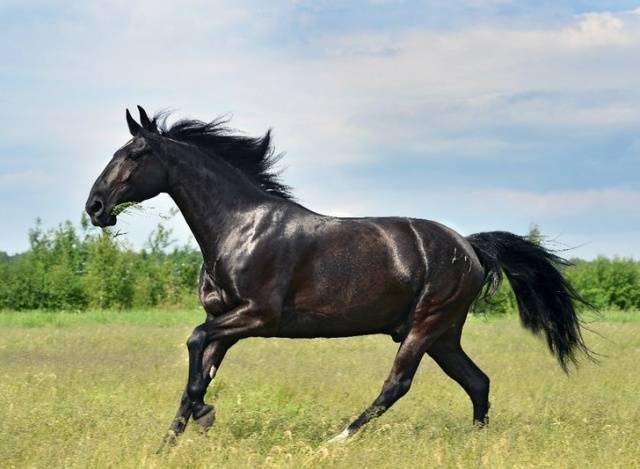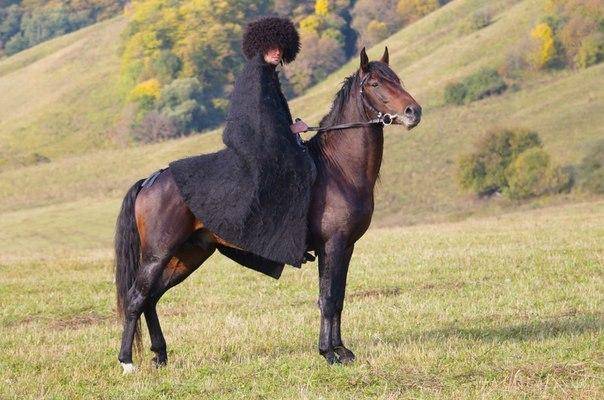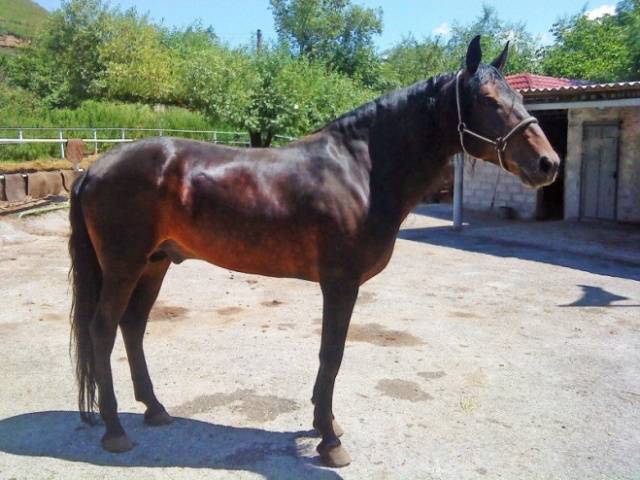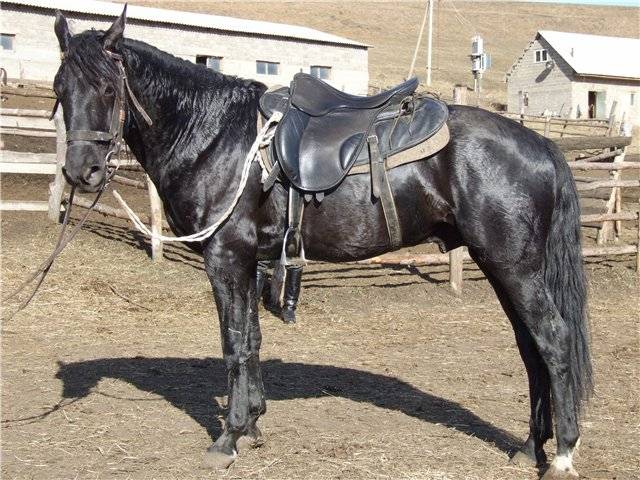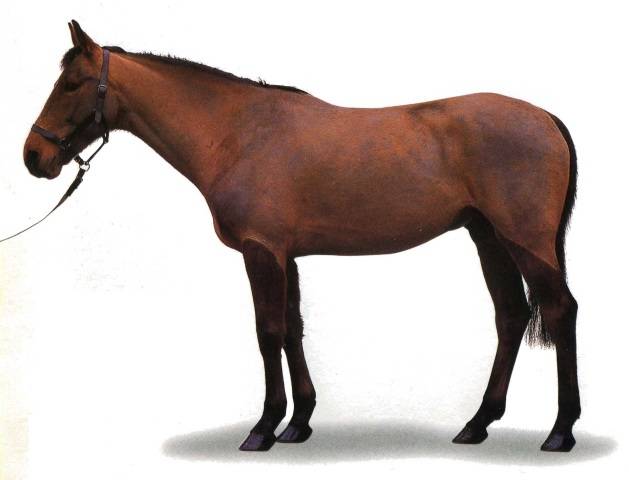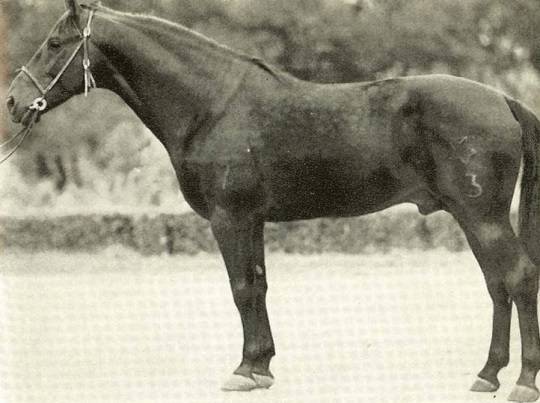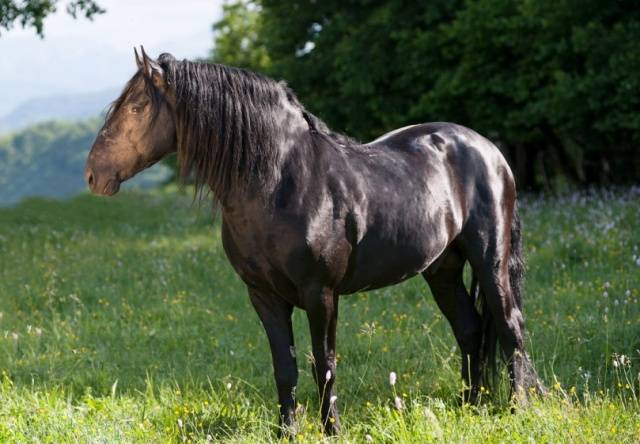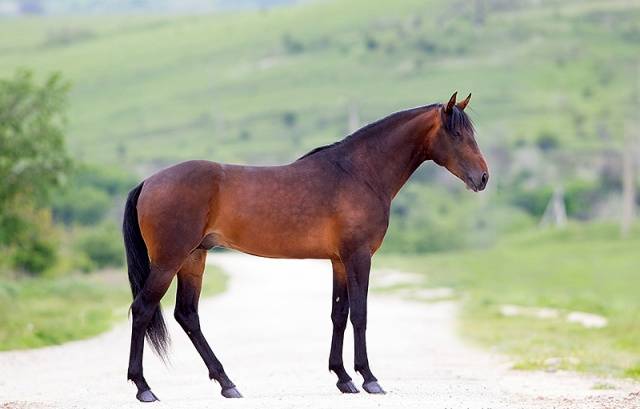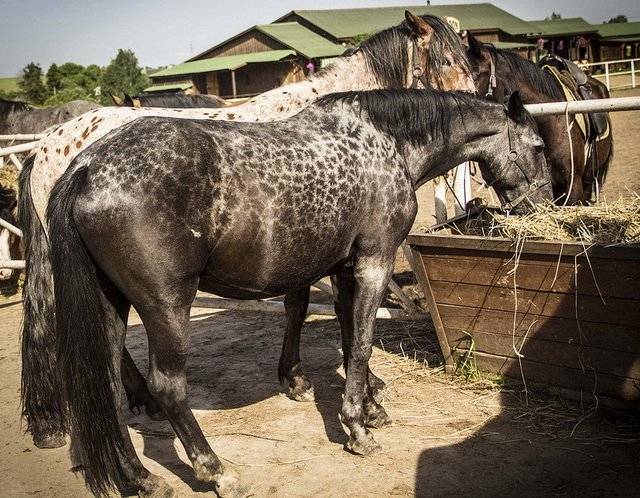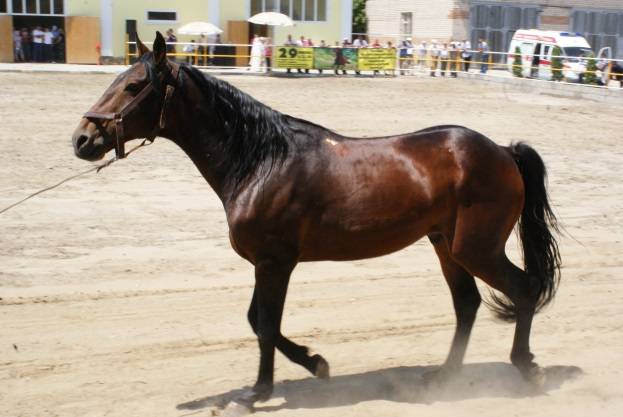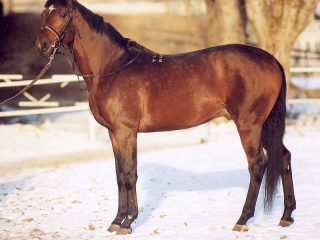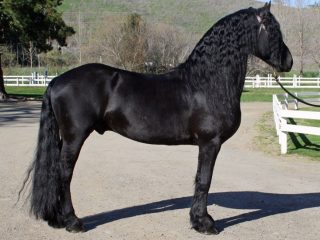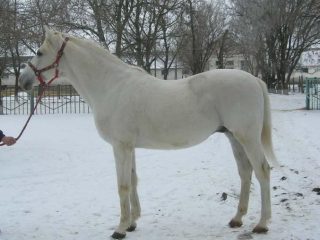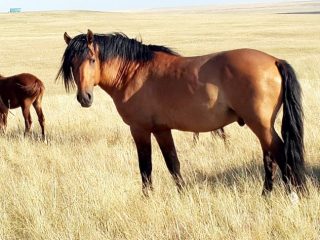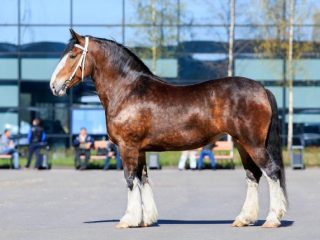Content
The Karachay horse breed began to develop around the 16th century. But then she did not yet suspect that she was from Karachay. The name “Kabardian breed” was also unfamiliar to her. On the territory where the future breed was formed, there lived a group of nationalities that bore the common self-name Adyghe. Not a single conqueror of the World passed by the Caucasus and the Caspian lowland, and the local horse population was influenced by Turkmen, Persian, Arabian, and Turkish war horses. The southern steppe horses, including the Nogai horse, also did not forget to show up. In peacetime, the Great Silk Road passed through the Caucasus. The caravans inevitably included oriental horses, which mixed with local stock.
With the arrival of the Russian Empire in the Caucasus, the horses of the mountaineers were called Adyghe or Circassian. The second name came from the name of one of the nationalities of the Adyghe group. But the name “Circassian” caused confusion, since at that time in the area of the Ukrainian city of Cherkassy, another breed of horses was bred for military needs. After the name of the city, the Ukrainian breed was called Cherkasy. Accordingly, the Adyghe horse could no longer be called that. This would cause serious confusion.However, the Russian Empire did not bother itself much with the development of horse breeding in the Caucasus region, although in 1870 a stud farm was founded in the village of Prirechnoye, supplying Adyghe horses to the tsarist army.
Systematic work with the breed, including for army needs, began after the revolution, when the Red Army needed a large number of horses. At the same time, the name of the breed was changed. Today this circumstance is causing heated debate.
How was it formed
It is believed that the Circassians were sedentary agricultural peoples, but for protection from enemies and, to be honest, military campaigns against their neighbors, they needed a war horse. However, there is information that the life of the Circassian was entirely tied to the horse. This means that the population lived primarily by banditry. The Circassians needed a horse that was not only capable of acting in a horse battle, as was the case in regular armies, but also one that had the ability to help out the owner during a duel or scattered battle. And the owner still had to be taken to the battle site.
Today, heated debates arise regarding the terrain through which the owner had to be transported. Fans of the Karachay breed claim that Kabardino-Balkaria has almost flat terrain. This means that the Kabardian horse did not need to move along mountain paths. That is, “if it can move along mountain paths, it means Karachay.” Supporters of Kabardian horse breeds they are very surprised by this argument: both administrative entities are located along the eastern foothills of the Caucasus Range and have a similar topography.
Thus, the first point of requirement in the formation of the breed is the ability to move along steep mountain paths.
The second requirement was hard hooves, since the population was not particularly wealthy and could not afford to spend money on iron horseshoes. Through cruel folk selection, the principle of which has been preserved to this day: “a good horse does not lame, we do not treat a bad one,” the Karachay (Kabardian) horse acquired very hard hooves, allowing it to move unshod over rocky terrain.
Due to the influence of other breeds of horses on the Caucasian local population, several types have formed in the Kabardian breed:
- zhirasht;
- cool;
- hagundoko;
- tram;
- shooloh;
- krymshokal;
- achatyr;
- Bechkan;
- shejaroko;
- ABC;
- Shagdi.
Of all the types, only the shagdi was a truly warhorse. The remaining types were raised in peacetime and were valued, some for their speed at races, some for their endurance, and some for their beauty.
A stallion could neigh to indicate an ambush or reconnaissance, but the job of mares was to bear foals.
Origin of the name
The history of the Kabardian horse breed begins with the establishment of Soviet power. To breed the Caucasian horse stock, they used the Malkinsky stud farm in Kabardino-Balkaria, which remained from the time of tsarist rule, plus two more were built in Karachay-Cherkessia. One of them, Malokarachaevsky, still operates today. From this moment on, confrontation arises.
During the Soviet era, the confrontation was secret, and the breed was given the name “Kabardinskaya” by the will of the authorities. Until the 90s and the parade of sovereignties, no one objected. Kabardinskaya is Kabardinskaya.
After national self-awareness rose, heated debates began between the residents of the two republics about who “belonged” to the breed. They were not even embarrassed by the fact that the same stallion could produce for a year at the Malkinsky stud and be the champion of the Kabardian breed, and the next year breed mares at the Malokarachaevsky stud and be the champion of the Karachay breed.
If you compare a photo of a Karachai horse and a photo of a Kabardian horse, then even the resident of these two Caucasian republics will not see the differences.
Stallion of the Karachay breed.
Stallion of the Kabardian breed.
The same straight shoulder, comfortable for moving along mountain paths. Same croup. Same neck set. The color is different, but characteristic of both breeds.
The rest of the equestrian world did not understand the beauty of such a division, and the Karabakh breed is completely absent from foreign sources. There is only Kabardian.
When buying a horse not from a factory, but from private hands, you will even have to believe the owner’s oaths. Moreover, in the latter case, it is possible that the horse will turn out to be outbred.
Since the difference between the Kabardian and Karachay horse breeds lies in one line of the breeding certificate and the administrative border between the republics, to buy an Adyghe (Caucasian) horse, you can safely go to either of the two breeding plants. A Kabardian horse purchased at the Malkinsky stud becomes a Karachai horse as soon as it crosses the border of Karachay-Cherkessia.
Exterior
When describing the standard of a Caucasian horse, it is unlikely that anyone will be able to notice the distinctive features of a Kabardian horse from a Karachay horse, although the breed and type can be confused. Fans of the Karachay horse claim that this breed is more massive than the Kabardian horse, contradicting themselves. While in the Kabardian breed, since the founding of stud farms in the young Country of Soviets, three types have been distinguished:
- Oriental;
- basic;
- thick.
If we compare the types of the Kabardian (Karachaevskaya) horse breed with photographs and names, it will become obvious that the “Karachaevskaya”, which moves well in the mountains, cannot be more massive than the flat “Kabardinskaya”. The relationship is the opposite: it is difficult for a large, massive horse to make its way along mountain paths, but it is more convenient to harness a more powerful horse.
The eastern type is distinguished by pronounced features of riding breeds, often with a straight head profile and light, dry bones. Good for steppe racing, but poorly suited for pack work. For a pack, you need a horse with a slightly more massive bone structure.
The basic type is the most numerous in the breed and is distributed throughout the region. These are horses with heavier bones, but not so massive that they cannot maintain their balance on mountain trails. This type combines the best features of a mountain horse.
The dense type has a long, massive body, well-developed bones and thick shapes, making horses of this type look like light draft breeds.
Typical representatives of the breed have a height at the withers of 150-158 cm. Body length is 178-185 cm. Pastern girth is 18.5-20 cm. Horses raised in a factory on good feed can be even larger.
The head is light, dry, often with a hook-nosed profile. Medium length, muscular neck, well defined withers. The back and loin are short and strong. Beveled croup. The chest is deep and wide.
The legs are dry, strong, with well-defined tendons. The front legs are placed straight. Size or clubfoot are disadvantages. Very often, horses of this breed have saber hind legs, although in other breeds this structure is a disadvantage. Sometimes an X-shaped stance can be added to the saber. The hooves, which have the shape of a “cup,” also have a characteristic shape.
An interesting fact is that photographs of the Karachay breed of horses are often the same ones that can be found by searching for “photos of the Kabardian breed of horses.”
Suits
The most common dark colors are bay of any color and black. There may be red and gray colors.
This graying does not hide the main color, but looks like a gray mesh on the horse’s body. Such markings are called “giraffe” marks. The photo shows a Karachay horse with giraffe markings. True, it is from Karachay, according to the seller. The origin of this mare is unknown, there are no breeding documents, but it was brought from the Caucasus.
Gaits
The specificity of the Karachay and Kabardian horse breeds is that among them there are many individuals that move with specific gaits, very comfortable for the rider. But these individuals are not able to run at the usual trot and gallop. Horses capable of running at such gaits were greatly valued by mountaineers when traveling long distances.
The basic gaits of Adyghe horses are also quite comfortable for the rider, since their stride is quite short due to their straight shoulders. The horse maintains speed due to the greater frequency of movements. To get an idea of the method of movement of Caucasian horses, you can watch a couple of videos.
Kabardian pacer.
Video of the Karachay pacer horse.
It is easy to notice that in terms of movement and appearance there is no difference between the horses.
Features of national character
“The Kabardian horse is angry. I’m going to the Christmas tree, he’s following me.” In fact, the character of these horses is no more evil than that of other aboriginal breeds, accustomed to surviving without human intervention and making their own decisions.
At the same time, in the mountains, horses largely depend on humans, therefore, having understood what a person wants from them, mountain horses are happy to cooperate. Another thing is that often a horse simply does not understand why a person needs to chase a cow or “ride” in a small fenced area. It’s clear why you need to carefully carry a rider along a narrow mountain path: you need to move to another pasture or get to another village.
Because of such features, many consider Adyghe horses to be stubborn. This is true when compared with European sporting breeds selected for unquestioning obedience. You will have to fight a lot with a horse of the Kabardian/Karachai breed.
They are not evil either. Rather, they are smart and not oriented towards communicating with many people. According to reviews from owners of Kabardian and Karachay horses, these animals tend to single out one person for themselves, obeying him in everything.
Native animals still need to prove that you are the owner and can demand something from them. Not everyone can do this.
Suitability in the modern world
In this video, a real fan of Kabardian horses claims that the horses are suitable for racing.
Unfortunately, modern races over serious distances of 100 km are almost exclusively run by Arabian horses. The rules provide not only for the horse to cover the distance, but also for a quick recovery after the run. A mandatory vet inspection is carried out after each stage of the run. Caucasian horses cannot withstand such loads. Or they take a very long time to recover, losing to their opponents. Or they develop lameness. Lameness can be both real and physiological, arising from excessive stress.
In show jumping they lose due to their height and low speed of passing the route. And in dressage because of the structure.
But Caucasian horses can be very good at the amateur level. Where you need to help out the rider or run a not too long distance. Their big advantage is their low price. In their homeland.
And there is also a very serious disadvantage: a horse raised in the mountains in clean air begins to get sick after arriving on the plain in the city. This applies not only to Caucasian horses, but also to other aboriginal horses that grew up far from civilization and lived in the open air all year round. Respiratory tract diseases in such horses begin very quickly.
Reviews
Conclusion
To stop disputes about whose breed is more thoroughbred, it would be wise to return the Caucasian horse to its original name “Adyghe”, uniting both populations. Adyghe are not suitable for keeping on a private farmstead if you need to use them in harness. But they are not bad in amateur sports. And they even know how to run dressage schemes for beginners, where the actions of the rider are still important, and not the quality of the horse’s movements.
